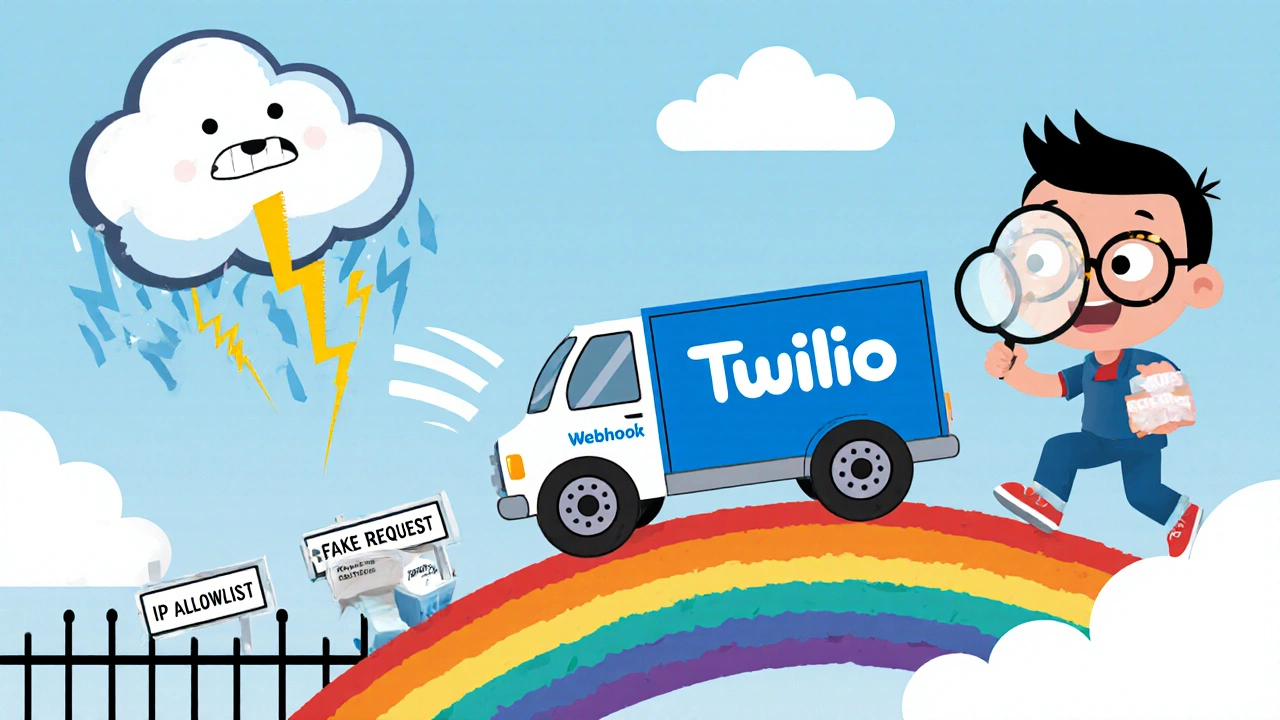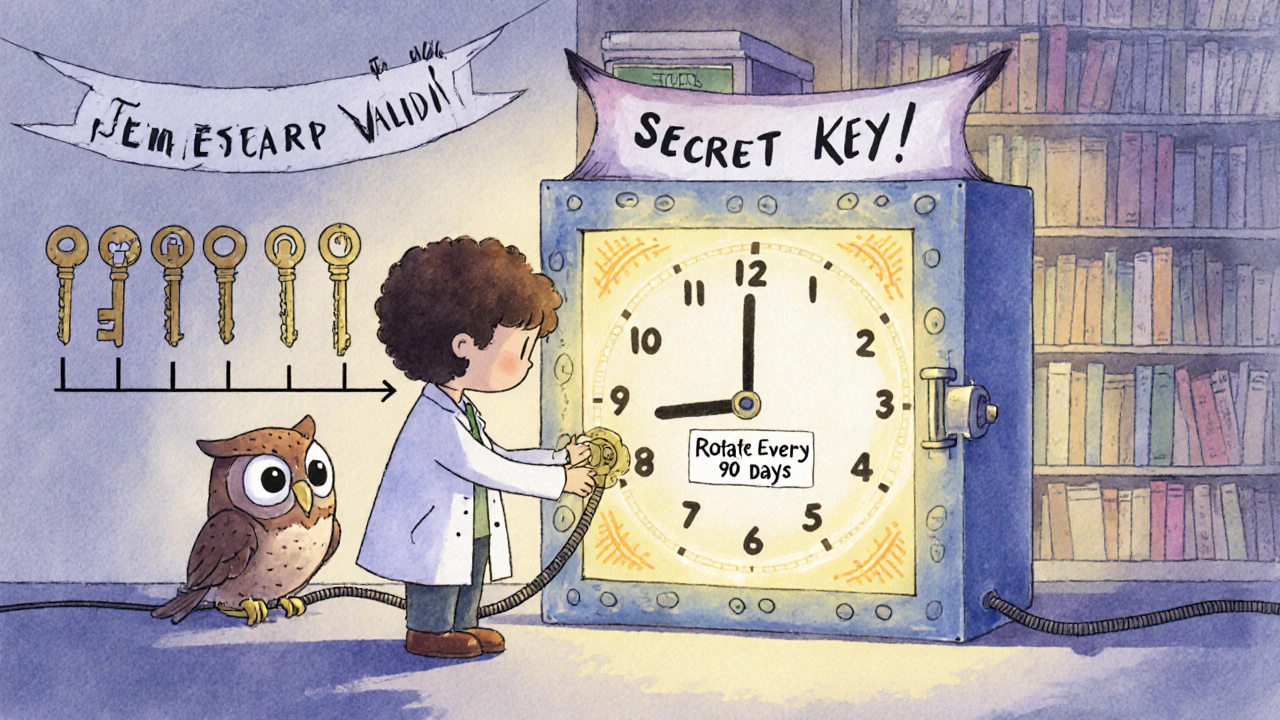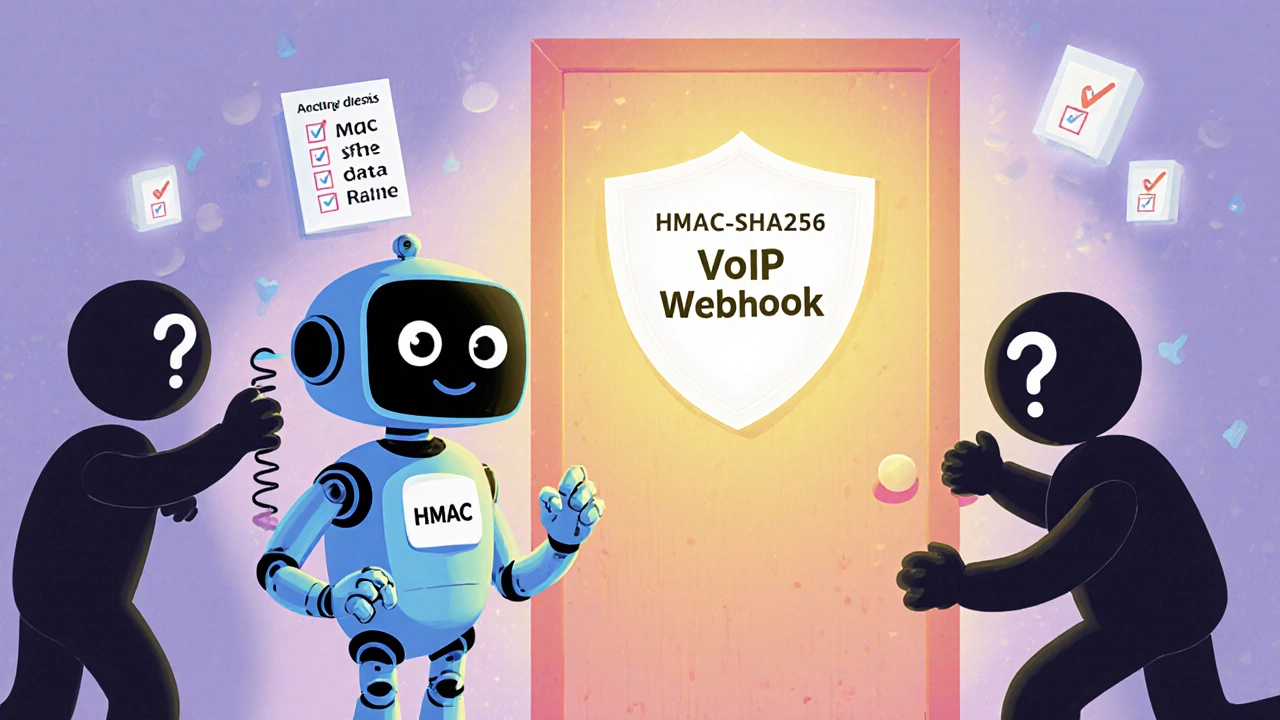When your VoIP system sends a webhook to notify your app about an incoming call or voicemail, you’re trusting that the message actually came from your provider-like Twilio, Vonage, or Plivo. But what if someone else is pretending to be them? Without proper security, attackers can fake call events, drain your credit with toll fraud, or steal sensitive call data. This isn’t theoretical. In 2023, VoIP fraud cost businesses over $1.2 billion, and nearly 30% of those breaches started with unsecured webhooks.
Why VoIP Webhooks Are a Target
VoIP webhooks are automated HTTP calls that your phone system makes to your server when something happens-like a call ends, a voicemail is left, or a payment is processed. These aren’t just convenience features. They’re the backbone of call routing, CRM updates, billing triggers, and compliance logging. But because they’re HTTP-based, they’re exposed to the same risks as any public API: spoofing, replay attacks, and data tampering.Imagine an attacker intercepts a webhook that says, “Call from John Doe to +44 20 1234 5678 completed.” They could replay that same message hundreds of times, making your system think thousands of calls happened. Each one could trigger a charge. That’s toll fraud. Or worse-they could alter the call details to hide illegal activity. Without verification, your system has no way to tell real from fake.
HMAC Signatures: The Gold Standard
The industry standard for securing VoIP webhooks is HMAC-SHA256. Here’s how it works: your VoIP provider generates a unique, secret key-usually 32 to 64 random characters-and shares it with you securely. Every time they send a webhook, they take the full payload (the JSON data), combine it with that secret key, and run it through the SHA-256 hashing algorithm. The result? A signature string.Your server receives the webhook, grabs the same payload, runs it through SHA-256 using the same secret key, and compares its own generated signature to the one sent. If they match, the message is authentic. If not, it’s blocked.
This isn’t just encryption-it’s proof. Even if someone captures the webhook, they can’t recreate the signature without your secret key. And because SHA-256 is cryptographically secure, it’s practically impossible to reverse-engineer the key from the signature. According to the 2024 Webhook Security Survey by Hookdeck, 78% of VoIP providers now require HMAC-SHA256. Twilio, Vonage, and Plivo all enforce it by default in production.
But there’s a catch: if you use a weak or predictable secret key, or if you store it insecurely (like in a GitHub repo or config file), you’ve already lost. Keys must be long, random, and kept in a secure vault-never hardcoded. Twilio recommends rotating these keys every 90 days. That means updating your server code, testing thoroughly, and switching over without downtime.
IP Allowlisting: The First Line of Defense
HMAC is powerful, but it’s not the first thing your server should check. Why? Because verifying a signature takes processing power. If you’re getting 10,000 fake requests a day, you’re wasting CPU cycles on garbage traffic.That’s where IP allowlisting comes in. VoIP providers publish a list of IP addresses their webhooks come from. Twilio, for example, uses ranges like 185.199.108.0/22 and 185.199.109.0/22. Your server checks the incoming request’s source IP before even looking at the payload. If it’s not on the list, you drop it-immediately.
This cuts down malicious traffic by up to 83%, according to Vonage’s internal testing. It’s fast, simple, and reduces load on your HMAC verification system. But here’s the problem: IP addresses can change. Twilio migrated its infrastructure in 2022 and temporarily broke webhooks for 7% of customers who hadn’t updated their allowlists. That’s why IP allowlisting alone is no longer enough. Twilio’s own API docs now say: “IP whitelisting alone is insufficient for production security.”

Why You Need Both
Using HMAC and IP allowlisting together isn’t optional-it’s mandatory for any business handling sensitive data. Here’s why:- IP allowlisting filters out 90%+ of random attacks before they even reach your code.
- HMAC ensures the remaining 10% are real-no spoofing, no replay, no tampering.
According to NSS Labs’ 2023 Web Application Firewall Benchmark, HMAC alone blocks 87% of attacks. IP allowlisting alone blocks 63%. Together? 98%. That’s not just better-it’s the difference between a secure system and a liability.
Regulations back this up. PCI DSS 4.0 requires cryptographic authentication for webhook integrations. HIPAA mandates audit controls for communication systems. GDPR demands encryption of personal data in transit. If you’re handling call records, payment info, or patient data, you’re legally required to use both methods.
Timestamp Validation: Stopping Replay Attacks
Even with HMAC and IP allowlisting, one attack remains: the replay attack. An attacker captures a real webhook-say, “Call from Jane Smith ended at 10:03:22”-and resends it hours or days later. Your system, seeing a valid signature and trusted IP, accepts it again. Now you’ve logged a fake call, charged a fake fee, or triggered a fake CRM update.The fix? Timestamp validation. Every webhook must include a timestamp (usually in Unix time). Your server checks it. If the time difference between the webhook’s timestamp and your server’s clock is more than 300 seconds (5 minutes), you reject it. This window accounts for minor clock drift but blocks old messages from being reused.
According to PCI DSS section 8.2.1, this is required for any payment-related VoIP communications. But even if you’re not handling payments, you should do it anyway. A 2024 Postman survey found that 31% of HMAC implementations failed because of unsynchronized clocks. Fix this by enabling NTP (Network Time Protocol) on your server. It’s free, simple, and prevents 92% of timestamp-related failures.
Implementation Checklist
Here’s exactly what you need to do to secure your VoIP webhooks:- Use HTTPS with TLS 1.2 or higher-TLS 1.0 and 1.1 are dead. 99.7% of VoIP providers dropped support by January 2024.
- Get your HMAC secret key from your VoIP provider’s dashboard. Store it in a secret manager (like AWS Secrets Manager, HashiCorp Vault, or even a .env file with strict permissions).
- Enable timestamp validation-reject any webhook older than 5 minutes.
- Implement HMAC-SHA256 verification-use a constant-time comparison function. Don’t use == or ===. Use libraries like Node.js’s
crypto.timingSafeEqualor Python’shmac.compare_digest. Timing attacks can leak secrets if you’re not careful. - Allowlist your provider’s IP ranges-check their docs regularly. Twilio, Vonage, and Plivo all update these. Subscribe to their security bulletins.
For developers new to this, expect to spend 12-16 hours learning and implementing it right. According to Pluralsight’s 2024 API Security Skills Report, most developers find HMAC implementation “moderately difficult.” But the payoff? A Twilio user on Gartner Peer Insights reported fraud attempts dropped from 127 per day to just 3 after implementing HMAC correctly.

Pitfalls to Avoid
Many teams fail not because they don’t know how-they just cut corners.
- Using MD5 or SHA1-some legacy systems still do. Don’t. MD5 is broken. In 2023, a fintech company lost $287,000 because their VoIP system used MD5 for HMAC.
- Hardcoding secrets-if your key is in a public repo, it’s already compromised. Use environment variables or a secrets manager.
- Ignoring key rotation-if you haven’t rotated your HMAC key in over 90 days, you’re at risk.
- Not testing with real payloads-use your provider’s sample webhooks. Test edge cases: empty payloads, malformed JSON, timestamps 10 minutes in the past.
Documentation quality varies wildly. Twilio’s webhook guide scores 4.6/5. Plivo’s? 2.9/5. If your provider’s docs are thin, check the Stytch Webhook Security GitHub repo-it has verified code samples in 7 languages, including Python, Node.js, and Go.
What’s Next? The Future of VoIP Webhook Security
HMAC-SHA256 isn’t going away anytime soon. Gartner predicts it’ll remain the dominant method through 2028. But change is coming.Twilio has started offering asymmetric key verification (like RSA signatures) for enterprise customers. This gives you non-repudiation-you can prove a webhook came from them, even if you’re audited. The Webhook Security Alliance announced in March 2024 that HMAC-SHA384 will be required for high-security VoIP apps by 2025.
Looking further ahead, mutual TLS (mTLS) is gaining traction. With mTLS, both your server and the VoIP provider authenticate each other using certificates. It’s more complex but eliminates the need for shared secrets. Salt Security’s 2024 roadmap shows 43% of VoIP providers plan mTLS support by 2025.
And yes-quantum computing will eventually break SHA-256. But NIST says that’s at least 10 years away. For now, focus on getting HMAC and IP allowlisting right. That’s where 98% of attacks are stopped.
Final Thoughts
Securing VoIP webhooks isn’t a luxury. It’s a business requirement. Whether you’re a startup using Twilio for customer support calls or a hospital managing patient voicemails, unsecured webhooks are a ticking time bomb. The tools are there. The standards are clear. The cost of failure is measured in millions.Don’t wait for a breach to wake you up. Implement HMAC-SHA256. Allowlist IPs. Validate timestamps. Rotate keys. Test everything. Your system-and your bottom line-will thank you.
Do I need both HMAC and IP allowlisting for VoIP webhooks?
Yes. IP allowlisting filters out most fake traffic before your server even processes it, reducing load and blocking simple attacks. HMAC verifies the message is authentic and hasn’t been altered. Using only one leaves you vulnerable. Industry standards and regulations like PCI DSS and HIPAA require both.
What’s the minimum hash algorithm I should use for HMAC?
Use HMAC-SHA256. SHA-1 and MD5 are broken and shouldn’t be used in any production system. SHA-256 is the current industry minimum, required by Twilio, Vonage, and Plivo. Some providers now recommend SHA-384 for high-security environments.
How often should I rotate my HMAC secret key?
Rotate your HMAC secret key every 90 days, as recommended by Twilio and other major providers. This limits damage if a key is leaked. Plan the rotation during low-traffic hours, test thoroughly, and update your server code before disabling the old key.
Can IP addresses be spoofed in VoIP webhook attacks?
Yes. Attackers can forge the source IP in HTTP requests, especially if they’re not on your local network. That’s why IP allowlisting alone is not enough. It’s a useful filter, but HMAC is what actually proves the message came from your provider and hasn’t been tampered with.
What happens if my server’s clock is out of sync?
Timestamp validation will fail, and your server will reject legitimate webhooks. To prevent this, enable NTP (Network Time Protocol) on your server. It automatically syncs your clock with trusted time sources and reduces timestamp errors by 92%.
Are there tools to help test my webhook security setup?
Yes. Twilio offers a built-in HMAC validator tool in its dashboard. The Stytch Webhook Security GitHub repo has open-source test scripts in Python, Node.js, and Go. Use these to simulate real webhooks and verify your verification logic before going live.
Is HMAC secure against quantum computing?
Not long-term. SHA-256 is vulnerable to quantum attacks, but NIST estimates practical quantum threats are at least 10 years away. For now, HMAC-SHA256 is still the standard. Post-quantum alternatives are being developed and may replace it by 2026-2027.
